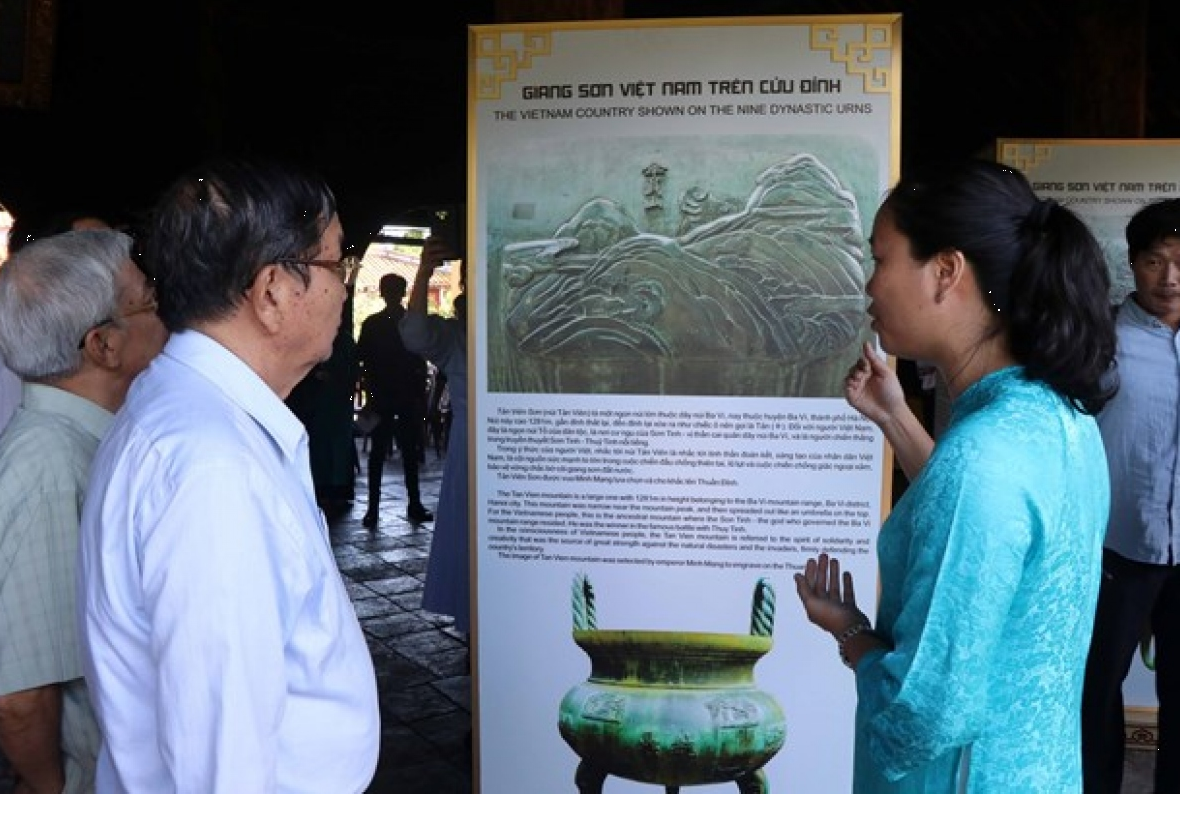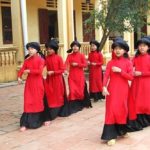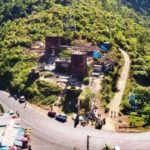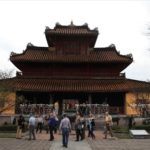At the event, 32 photos with captions of the sea, rivers, and mountains across all regions of Vietnam, which were carved on the Nine Dynasty Urns (Cuu Dinh in Vietnamese language), were on display.
The bronze urns were cast in late 1835 and completed in early 1837, under the reign of King Minh Mang. They represent the unity and beauty of the country, as well as the aspirations for the immortal existence of the Nguyen Dynasty, according to the director of the Hue Monuments Conservation Centre, Hoang Viet Trung.
The urns, which remain intact, have been positioned in the yard of the citadel’s The To Mieu (To Mieu Temple), a place to worship the kings of the Nguyen Dynasty, since they were completed.
The highest urn is 2.5 meters high, while the shortest is 2.3 meters high. Each weighs up to 2,600 kg and has a name symbolizing an emperor of the Nguyen Dynasty.
Each urn was carved with 17 patterns featuring plants, animals, landscapes, and places of Vietnam.
The nine urns were recognized as a national treasure in 2012. The Hue Monuments Conservation Centre has also been taking steps to seek UNESCO recognition of them as a world documentary heritage.
Agreement signed to preserve and promote Hai Van Gate national site
NDO – A cooperative agreement was signed between the authorities of central Thua Thien-Hue province and Da Nang city on February 20 to preserve and promote the historical and architectural values of Hai Van Quan (Hai Van Gate) national relic site.
Spratly and Paracel Islands on the Hue Nine Dynastic Urns
Hue’s nine dynastic urns are not only national treasures indicating the authority and power of the Nguyen Dynasty, the final feudal dynasty of Vietnam, but also evaluated as a geographical book, a unique encyclopedia of Vietnam in the early 19th century. In particular, on the nine dynastic urns, many names of mountains, rivers and marine islands of Vietnam are shown quite clearly and convincingly. This shows that our ancestors had deep awareness of national sovereignty, including marine islands.









